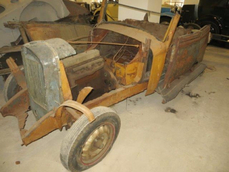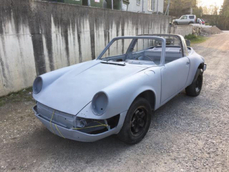Horch 8 Typ 305/306 (13/65 PS) 1928
General description :
Horch 305 Königswelle
Erfüllen Sie sich mit diesem seltenen Horch 305 Königswelle Restaurationsobjekt Ihren ganz persönlichen Traum vom Oldtimer. Dieser Horch 305 Königswelle mit einem starken 8-Zylinder birgt unendliches Potenzial.
Teile der Karosserie fehlen!
All unssere Wagen stehen bei uns in der nähe von Dresden , da wir kein
Museum sind bitten wir Sie darum bei echtem Interesse einen Besichtigungstermin mit uns auszumachen .
*Änderungen und Irrtümer vorbehalten*
1928 Horch 8 Typ 305/306 (13/65 PS) is listed for sale on ClassicDigest in Thomas-Mann-Str. 16DE-01219 Dresden by Sachsen-Veteran for €200000.
Car Facts
Car type : Car Make : Horch Model : 8 Typ 305/306 (13/65 PS) Engine size : 3.4 Model Year : 1928 Sub type : Convertible Location : Thomas-Mann-Str. 16DE-01219 Dresden Vehicle Registration : Undefined
200000 €
Other cars listed for sale by this dealer
About Horch
Horch, the German luxury automobile manufacturer, often stood in the shadow of its more renowned rivals, such as Mercedes-Benz and BMW. Yet, it had a unique and noteworthy story to tell in the world of luxury cars.Founding of Horch:
Horch was founded in 1904 by a visionary engineer named August Horch. The company was based in Zwickau, Germany, and it quickly gained a reputation for producing high-quality, finely crafted automobiles.
Rivalry with Mercedes-Benz:
One of the biggest challenges Horch faced was the fierce competition with Mercedes-Benz, the giant of German luxury automakers. Mercedes-Benz was a household name, and its cars were synonymous with luxury and performance. This rivalry often placed Horch in the shadows.
Engineering Excellence:
Horch, however, was no slouch in the engineering department. The company was responsible for several innovations, including the introduction of a straight-eight engine. These engineering feats helped Horch gain recognition for its performance and reliability.
Merging into Auto Union:
In 1932, Horch, along with Audi, DKW, and Wanderer, merged to form Auto Union. The four interlocking rings in Audi's logo symbolized this union. Under the Auto Union umbrella, Horch continued to produce luxury vehicles, contributing to the overall success of the group.
Challenges and World War II:
World War II brought significant disruptions to Horch's production. The post-war era also presented economic challenges as the company sought to regain its pre-war glory.
End of the Road:
In 1958, Auto Union was acquired by Daimler-Benz, the parent company of Mercedes-Benz. This marked the end of the Horch brand. Its legacy was incorporated into the larger Auto Union family.
Horch may not have reached the same level of international fame as Mercedes-Benz, but it played a significant role in the history of German luxury cars. Its dedication to engineering excellence and luxury contributed to the overall reputation of German automobile manufacturing. While it may have lingered in the shadow of its competitors, Horch's legacy endures as a testament to the golden era of automotive craftsmanship in Germany. It's a reminder that the history of automobiles is not just about the biggest names but also the unsung heroes that made their own indelible mark.


















